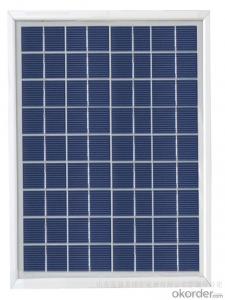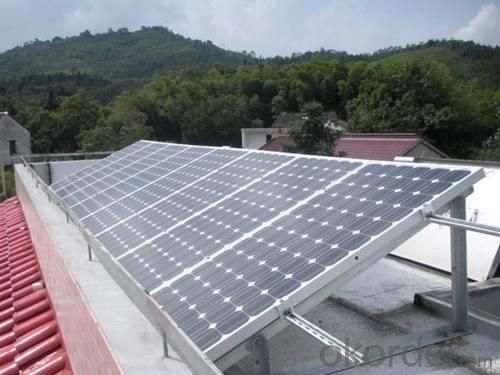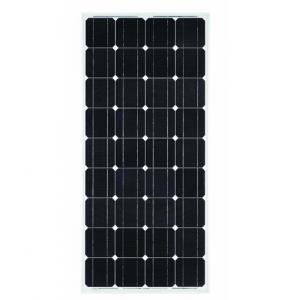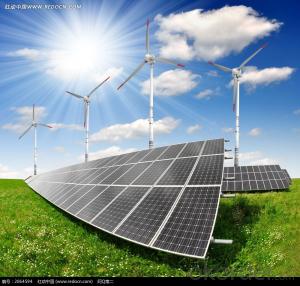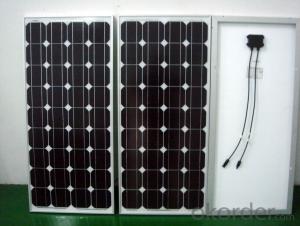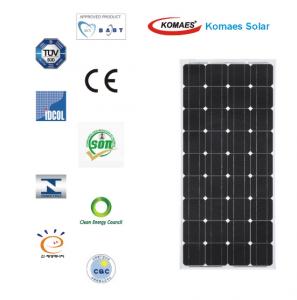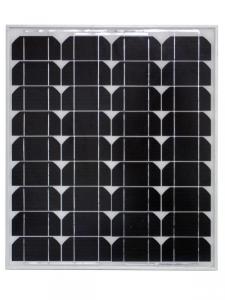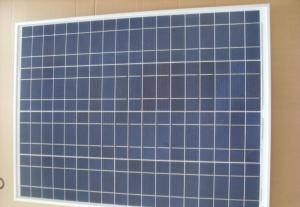150W C-Si Solar Panels with TUV IEC MCS CEC IDCOL SONCAP Certificates
- Loading Port:
- Shanghai
- Payment Terms:
- TT OR LC
- Min Order Qty:
- 1000 watt
- Supply Capability:
- 100000000 watt/month
OKorder Service Pledge
OKorder Financial Service
You Might Also Like
- TUV IEC, MCS (UK), CE, CEC (Australia), INMETRO, IDCOL, SONCAP CERTIFIED
- [EU ANTIDUMPING DUTY-FREE]
- PROFESSIONAL SOLAR PANEL MANUFACTURER SINCE 2004
FEATURES
`Long Service Life
`High Efficency Solar Cells
`Special Aluminum Frame Design
`High Transmission,Low Iron Tempered Glass
`Advanced Cell Encapsulation
APPLICATIONS
`Solar power stations
`Rural electrification, Small home power systems
`Power supply for traffic, security, gas industry
`12V and 24V battery charging system
`Other industrial and commercial applications
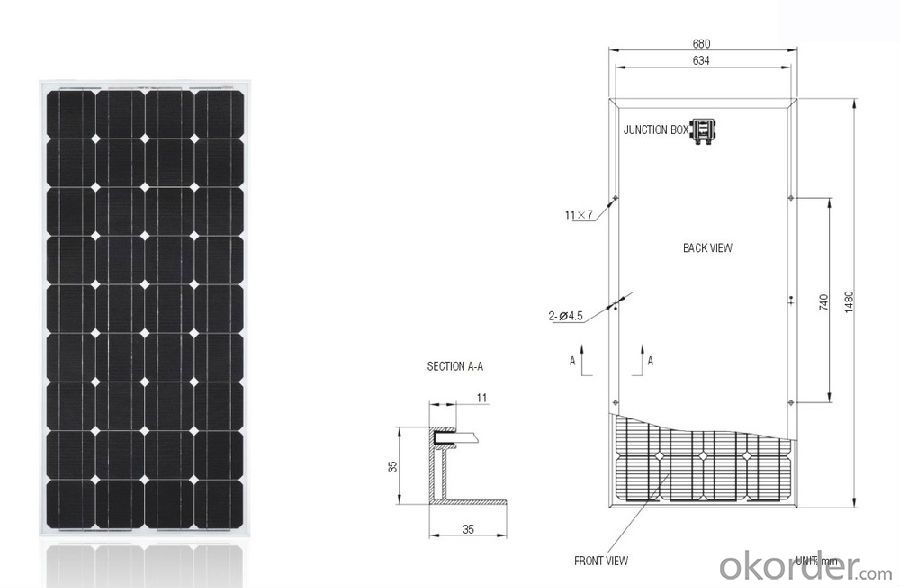
ELECTRICAL CHARACTERISTICS | ||||||
Model Number | KM130(6) | KM135(6) | KM140(6) | KM145(6) | KM150(6) | |
Maximum Power as per STC | Pmax(W) | 130 | 135 | 140 | 145 | 150 |
Power Tolerance | % | ±3% | ||||
Maximum Power Voltage | Vm(V) | 17.96 | 18.14 | 18.36 | 18.15 | 18.28 |
Maximum Power Current | Im(A) | 7.26 | 7.45 | 7.65 | 7.99 | 8.21 |
Open Circuit Voltage | Voc(V) | 21.6 | 21.74 | 21.96 | 21.72 | 21.9 |
Short Circuit Current | Isc(A) | 7.83 | 8.04 | 8.17 | 8.69 | 8.93 |
Maximum System Voltage | VDC | 1000 | ||||
Cell Efficiency | % | 15.0 | 15.5 | 16.1 | 16.7 | 17.3 |
Module Efficiency | % | 12.9 | 13.4 | 13.9 | 14.4 | 14.9 |
Cells per Module | Pcs | 36 | ||||
Cell Type | Monocrystalline silicon | |||||
Cell Size | mm | 156 x 156 | ||||
Bypass Diodes | Pcs | 10Amp, 2 pcs | ||||
Max. Series Fuse Rating | A | 10A | ||||
Temperature coefficient of Isc | %/°C | 0.05 | ||||
Temperature coefficient of Voc | %/°C | -0.35 | ||||
Temperature coefficient of power | %/°C | -0.47 | ||||
NOCT- Nominal operating cell temperature | °C | 47 ± 2 | ||||
Operating Temperature | °C | -40 ~ +85 | ||||
MECHANICAL CHARACTERISTICS | ||||||
Dimensions | mm | 1480 x 680 x 35 | ||||
Weight | Kg | 11.6 | ||||
Type of Junction Box | TUV certified, IP65 | |||||
Cable Type, Diameter | - | |||||
Connector | - | |||||
Tempered Glass | 3.2 mm, high transmission, low iron | |||||
Packing
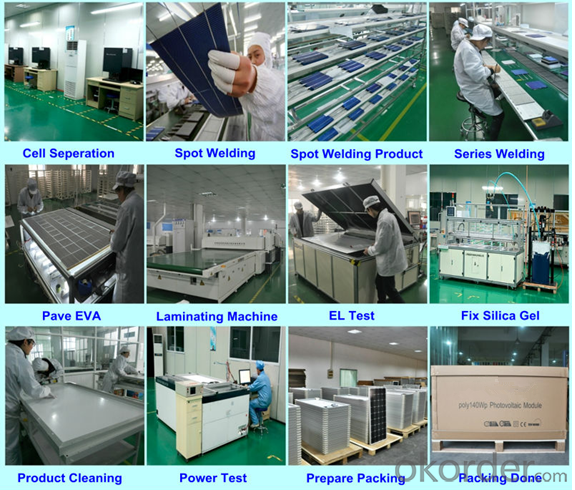
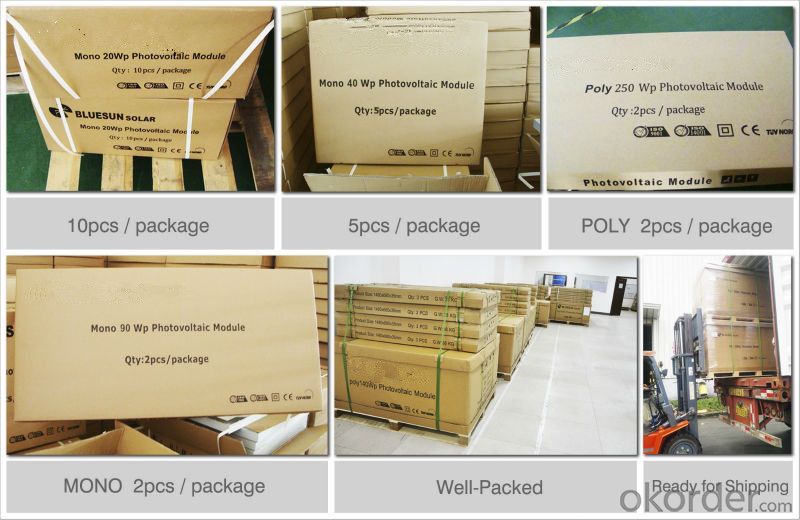
FAQ
1. What kind of Solar Cells does it have
---poly crystalline 156*156mm and 125*125mm or mono 125*125mm and 156*156mm
2. Is the front panel Glass or Plastic
---Tempered glass 3.2mm thickness or adjust to what you need, Light transmittance up to 95%.
3. Does it meet Europe Standards for Solar Energy
---This is TUV approval products, all the producing procedure apply TUV&UL.
4. What is the Efficiency level
--- Between 16-18.9% for solar cells.
5. What is the Nominal Voltage
--- 18v 20v 24v 36v 30v 48v , and so on, we can adjust to what you need.
6. What is the Warranty Period, How many years?
Power efficiency warranty:
---90% in 10 years; 80% in 25 years.
- Q: Can solar panels be installed on a factory or manufacturing plant?
- Yes, solar panels can be installed on a factory or manufacturing plant. In fact, many industrial facilities are increasingly adopting solar power as a sustainable and cost-effective energy solution. Installing solar panels on factory rooftops or open spaces can help offset electricity consumption, reduce carbon emissions, and provide long-term savings on energy bills.
- Q: What is the impact of roof orientation on solar panels' performance?
- The impact of roof orientation on solar panels' performance is significant. The orientation of the roof determines the amount of sunlight the panels receive throughout the day. Ideally, solar panels should be installed on a south-facing roof to maximize their exposure to sunlight. East and west-facing roofs can also work, but they may produce slightly less energy. North-facing roofs are generally not suitable for solar panel installation as they receive the least amount of sunlight. Overall, roof orientation plays a crucial role in determining the efficiency and effectiveness of solar panels.
- Q: if u buy solar panels and never take em out of the box for like thirty years will they still work good thirty years after you bought them
- Build okorder /
- Q: Can solar panels be installed on a sports stadium?
- Yes, solar panels can be installed on a sports stadium. In fact, many stadiums around the world have already adopted solar energy systems to generate electricity and reduce their carbon footprint. These panels are typically installed on the roof or in parking lots surrounding the stadium, taking advantage of the large surface area available. Installing solar panels on a sports stadium not only helps in generating clean energy but also serves as a visible statement of the stadium's commitment to sustainability.
- Q: in the afternoon sun heat increases to high level due to which the panels heats up very high now my question is this heat will effect the panels life time and will damage the panels or not ??
- Some are better than others. It depends on the manufacturing technique. All will degrade over time, some over decades, others over months (if they're defective).
- Q: Can solar panels be installed on parking lots or garages?
- Yes, solar panels can be installed on parking lots or garages. In fact, these areas are often ideal for solar panel installations due to the large open spaces and unobstructed sunlight exposure. Installing solar panels on parking lots or garages can help generate clean and renewable energy, reduce electricity costs, and provide shade for parked vehicles.
- Q: Any recommendations for companies? Any things to look out for?
- Yes, solar panels are a great way to save on electricity costs for your home. 4 things I can tell you to look out for are: Make sure you can fit enough solar panels on your house to make a decent saving. If you don't have the roof space then you can't put up enough panels and you might as well not bother. For a medium sized home, I would say that you should go no smaller than 2.2kW in solar panels. If you can fit more then go for it. Make sure that the inverter that is used is big enough. It has to deal with the watts from the solar panels back to the power board to convert it as useable energy. If you have a rebate system where you live then make sure you use it. Where I am we have carbon credits that the government will give you that you use to offset the cost of purchasing solar. Don't fall for gimmicks where a company will promise you that you won't pay electricity every again. In order for that to happen you need to be putting more electricity back in the grid as you are currently using so you either need a huge amount of solar panels or you really need to cut back on what you are currently using.
- Q: Can solar panels be installed in a shaded area?
- Solar panels can still be installed in a shaded area, but their efficiency will be significantly reduced as they rely on direct sunlight to generate electricity.
- Q: Can solar panels be installed on a hotel or hospitality facility?
- Yes, solar panels can be installed on a hotel or hospitality facility. In fact, many hotels and hospitality facilities are adopting solar energy as a sustainable and cost-effective solution. Solar panels can be installed on the rooftops, parking lots, or any available open space to generate clean and renewable energy for the facility's electricity needs. This not only reduces the carbon footprint but also helps in saving on energy bills in the long run.
- Q: I want to be more self sufficient and get solar panels for electricity in a small house any tips will help. i need to know how many watts is enough and ect.
- Unless you're very rich, you won't be able to afford solar panels that can meet the average demand of a home. In the US, the average demand for a home is 920 kwh per month, which amounts to 3,833 Watt panels if you assume 8 hours of usable sunshine and don't take into account your location. At current installation rates that's easily a $9,65 project. If you assume a 25 year useful life, it amounts to a return of 3.3% per annum at 0 cents a kwh not counting the costs of repair, insurance, the inverter, any fees to the utility for net metering if any etc. You would be better off putting $9,65 into a mutual fund until better technology or government incentives came along, in some areas, the government subsidies can make it worth your while. Also, keep in mind that in many areas, the net metering arrangements only deducts the power you've generated from your bill so you would want to size the array to meet your base usage in order to get the most from your investments. So meeting your actual needs would result in a loss on the return as there will be months where your usage is less than your average. In theory, if you put $7,208.69 into a mutual fund expected to return 4.4% per annum then you could withdraw enough to pay each month's power bill for 25 years at $0.0 a kwh and therefore be self sufficient through financial means. You would get more mileage focusing on heating and hot water as heating and hot water is 75% of a home's energy use and can be addressed with lower cost technologies like passive solar and solar thermal panels. You have to put it into perspective, it's an investment and you want a return that's competitive with your investment opportunities.
Send your message to us
150W C-Si Solar Panels with TUV IEC MCS CEC IDCOL SONCAP Certificates
- Loading Port:
- Shanghai
- Payment Terms:
- TT OR LC
- Min Order Qty:
- 1000 watt
- Supply Capability:
- 100000000 watt/month
OKorder Service Pledge
OKorder Financial Service
Similar products
Hot products
Hot Searches
Related keywords
